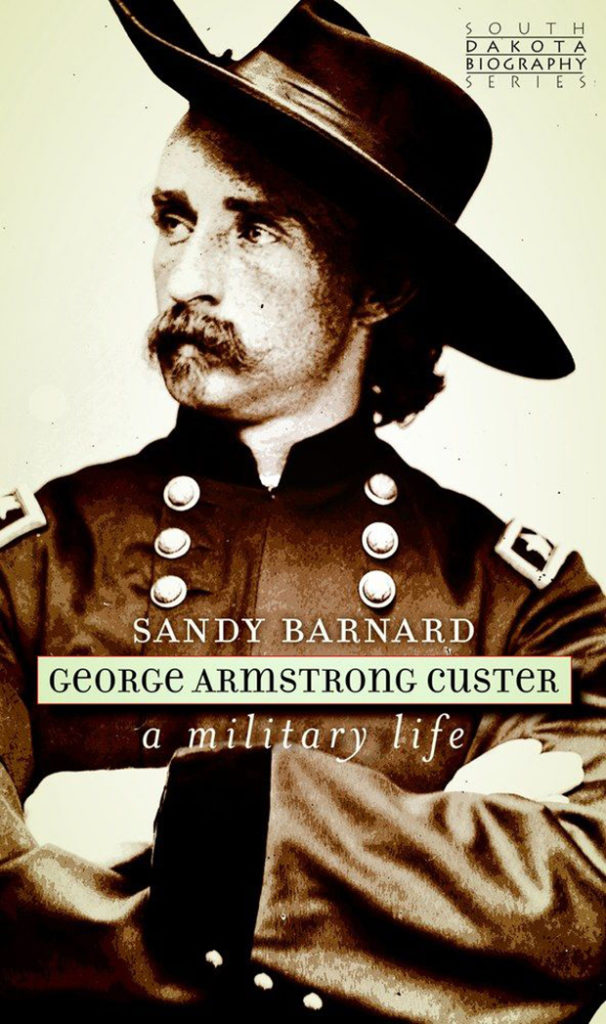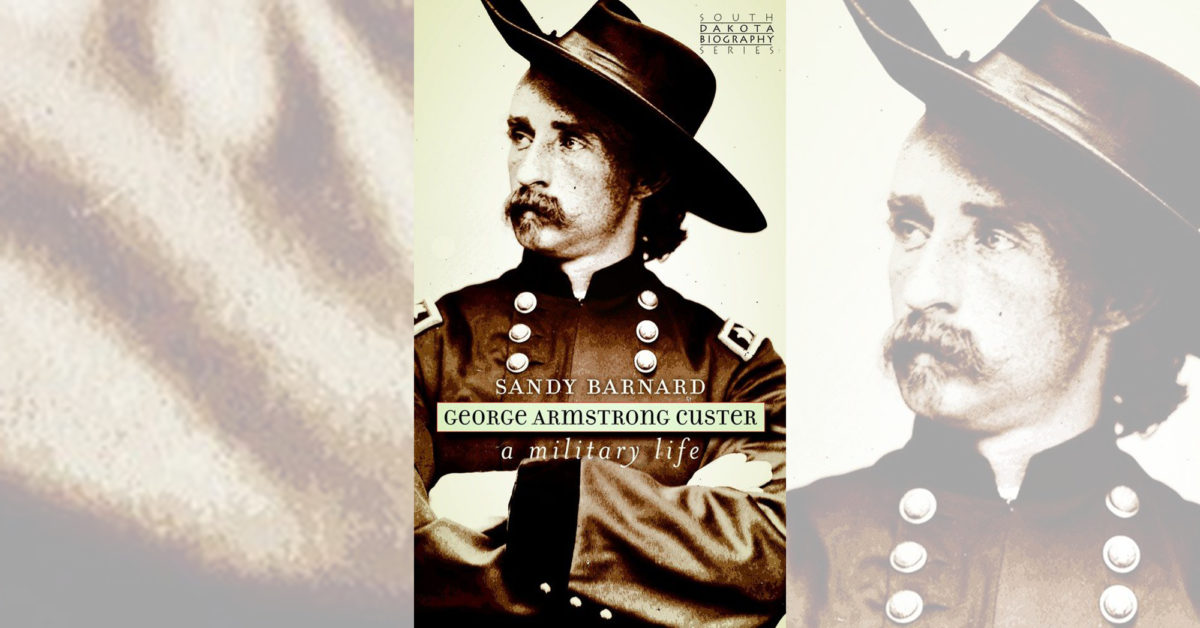George Armstrong Custer: A Military Life, by Sandy Barnard, South Dakota Historical Society Press, Pierre, 2021, $14.95
Why another George Custer biography? To author Sandy Barnard the answer is clear: “Custer’s death and defeat at Little Bighorn assured that he would forever remain more than a footnote in America’s military legacy.” The retired professor of journalism is well qualified to tell the story of this controversial soldier and does so in an engaging manner. Part of the South Dakota Biography Series, this brief bio provides necessary historical background and then wisely sticks to the subject without detailed diversions on the Civil War or the Plains Indian wars.
The military portrait Barnard deftly paints is that of two different soldiers. First is the aggressive, courageous and largely successful Union cavalry leader, who played, for example, a critical role on East Cavalry Field at Gettysburg on July 3, 1863. Civil War’s end posed a challenge to the former general, for whom civilian life was unlikely. The author asserts the former “Boy General” sought to reinvent himself within the confines of a reorganized Regular Army tasked with guarding the frontier and enforcing Reconstruction in the South. Notwithstanding Custer’s literary prowess and self-promotion, the accomplishments of his second military career were at best mixed, given, for example, his few Indian fights and 1867–68 suspension from duty.
Contrary to popular film and fiction, Indian campaigns did not consume all of Custer’s energy and efforts after his assignment to the West. When stationed in Kentucky on Reconstruction duty, for example, “he took leave for seven months to dabble in investments, hobnob with the rich and famous and discuss politics, largely to no personal advantage.” The author portrays a far more complex figure than the controversial Indian fighter who died at the Little Bighorn.
The book’s clear, concise overview of Custer’s last campaign and his legacy correctly underscores the Army’s strategic miscalculations during the Sioux War of 1876 and the Plains Indian wars in general. The military incorrectly “believed the Indians would always flee in the face of an armed force attacking their village.”
George Custer, Barnard concludes, “was an imperfect man asked to take on dangerous challenges on the nation’s battlefields.” That is a fair assessment. However, one might question if he was “no more bloodthirsty, if at all, than most American army officers who served alongside him in the Civil War, as well as those in subsequent American wars.” Barnard’s book is a pleasure to read if for no other reason than as an example of effective historical biography. The author tells an interesting story.
—C. Lee Noyes

George Armstrong Custer
A Military Life
By Sandy Barnard
This post contains affiliate links. If you buy something through our site, we might earn a commission.





